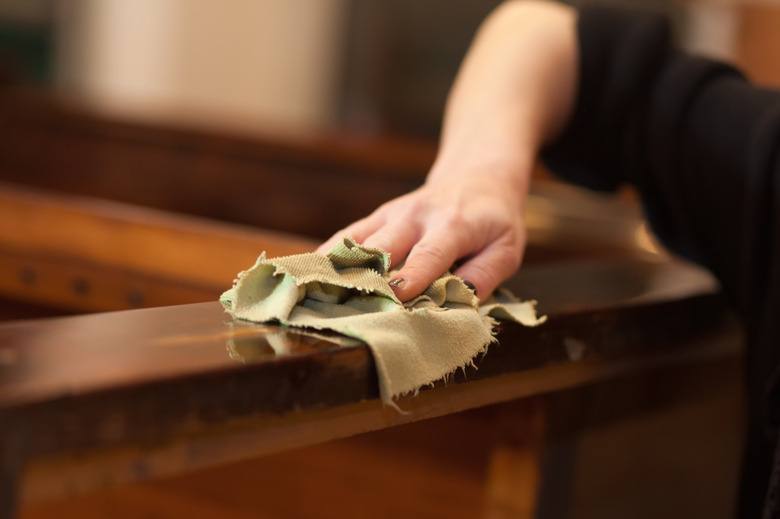How To Make Your Own Teak Oil
Olive oil comes from olives, corn oil from corn. But don't follow that logic to assume that teak oil comes from teak. It doesn't, just like motor oil isn't squeezed from motors. Teak oil is a type of finishing product for wooden furniture. It was initially formulated for teak wood, which explains its name, and it's said to penetrate better than traditional finishing oils into close-grained wood. Those who want to make their own teak oil can't expect to find a standard recipe since different manufacturers use different formulas containing completely different ingredients.
What Is Teak Oil?
What Is Teak Oil?
Teak is a type of wood often used for furniture, cabinets and other products. Although teakwood contains more natural oils than many types of wood, teak oil isn't an extract of the wood. Rather, it's a blend of oils and solvents that are used as a type of wiping varnish for items made of teakwood.
Many times, those making or installing wood cabinets or furniture paint on a finishing oil, such as tung oil or boiled linseed oil polyurethane mix. These products harden into a solid finish when they contact air, but they don't always get deep enough into close-grained wood to be practical. A thinner product like teak oil is said to set better on products made of teak and other close-grained woods.
But there's no "standard" teak oil, nor will you find one set recipe for making it. The ingredients for products called teak oil vary enormously from one to the next, and some even include alkyd or polyurethane resins.
Tung Oil vs. Teak Oil
Tung Oil vs. Teak Oil
The easiest way to understand the benefits and detriments of teak oil is to compare it with other wood oils. One of the most popular types of wood oils is tung oil.
Teak oil is considered a good fit for use on dense woods like teak and mahogany. It goes on easily and imparts a warm glow and hand-rubbed appearance. Teak oil can be used inside or outside, and treated woodwork won't crack, chip or peel, although experts disagree on whether it benefits furniture. On the downside, it can alter the color of the wood. There's considerable debate about whether all or some products called teak oil offer UV resistance, although many make this claim.
Tung oil forms a hard, impenetrable surface when applied to wood. This layer is shiny and waterproof. Best of all, tung oil isn't toxic but can be applied and reapplied, even to products like wooden cutting boards and salad bowls. The downside is that it doesn't penetrate well into dense wood.
Making Teak Oil
Making Teak Oil
Much teak oil is a mix of linseed oil, tung oil, mineral oil and solvents like petroleum distillate. Petroleum distillate is also called paint thinner, and lots of teak oil products contain it. The idea is to thin down one of the finishing oils in order to get better penetration in dense wood. On the other hand, Watco Teak Oil ingredients include naphtha instead of paint thinner, which is said to dry more quickly. And some "teak oils" don't contain any oil at all.
If you want to mix your own teak oil, you might choose a type of oil and add either petroleum distillate or naphtha. Use one part of each, then blend. If you want additional protection, you can add a varnish that contains solvents compatible with those in the oils.
